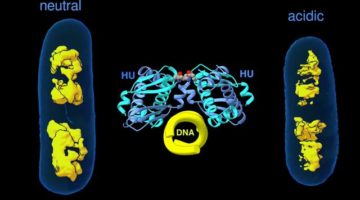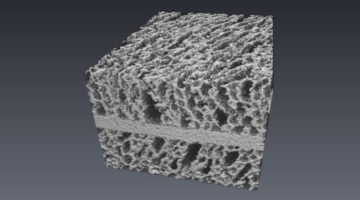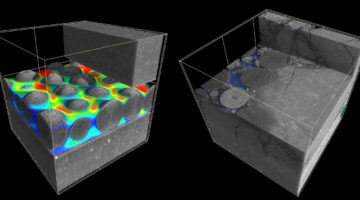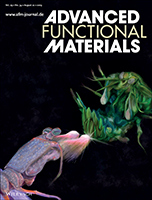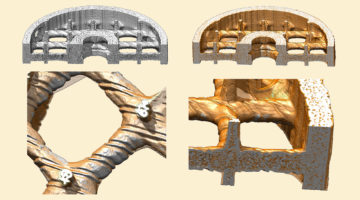Multiscale, multimodal visualization techniques at the ALS enabled researchers to clarify how proteins remodel bacterial DNA in response to stressful environments. The discovery could lead to new strategies for controlling microbial behavior and, eventually, new ways to fight bacterial infections. Read more »![]()
![]()
ALS Work Using Tomography
Tomography allows 3D imaging of structures inside samples without the need to physically slice them open. A series of images is collected as a sample is rotated, and the raw data is computationally converted into digital sections that can be stacked to reconstruct 3D visualizations of the sample. The very high flux of x-rays and infrared light at the ALS allows collection of high-quality, high-speed 3D images at nanometer or micrometer resolution. Synchrotron tomography also enables photon-energy tuning for element- and chemistry-specific contrast, as well as phase-contrast imaging.
Battery Breakthrough Gives Boost to Electric Flight and Long-Range Electric Cars
While lithium metal extends an EV’s driving range, it also shortens the battery’s useful life due to lithium dendrites that can cause short circuits. Researchers report a new class of soft, solid electrolytes—made from both polymers and ceramics—that suppress dendrites, before they can propagate and cause the battery to fail. Read more »
Study Gains New Insight Into Bacterial DNA Packing
When bacteria are put in different environments, their genes start to adapt remarkably quickly because the proteins making up their chromosomes can pack and unpack rapidly. Researchers have now imaged this process at the molecular level, a discovery that could eventually enable scientists to develop strategies to control microbial behavior. Read more »
Porous Electrolyte Frameworks for All-Solid-State Batteries
With the help of microtomography at the ALS, researchers developed a method to produce a porous electrolyte framework that they used to construct a working all-solid-state battery. Such batteries potentially offer a higher energy density, longer cycle life, and better inherent safety than state-of-the-art lithium-ion batteries. Read more »
Direct Imaging of Fracture Closure in Reservoir Shales
Using x-ray microtomography at the ALS, researchers identified and characterized the microscale factors affecting fluid flow through shale fractures propped open with sand or ceramic spheres. A better understanding of propped fractures can lead to safer and more efficient recovery of hard-to-reach oil and gas resources. Read more »![]()
![]()
Staff at Berkeley Lab’s X-Ray Facility Mobilize to Support COVID-19-Related Research
X-rays allow researchers to map out the 3D structure of proteins relevant to diseases at the scale of molecules and atoms, and the ALS has been recalled to action to support research related to COVID-19, the coronavirus disease that has already infected about 2 million people around the world. Read more »
The Chemistry of Art
To learn more about the chemical processes involved in aging oil paints in microscopic and nanoscale detail, researchers conducted a range of studies that included 3D x-ray imaging of a paint sample. The study could have broader implications for conservation based on the observed chemistry of oil paints. Read more »
The Stomatopod Telson: Convergent Evolution in the Development of a Biological Shield
In this article, researchers identify multiscale structure‐mechanical property relationships within the shield-like exoskeletal telson structure of the mantis shrimp, used for defense and protection. Comparison of telsons from two evolutionarily divergent species reveal differences in macromorphology, cuticle thickness, and mineralization, imparting compressive stiffness as well as compliance for energy absorption. Read more »
Absorber Captures Excess Chemotherapy Drugs
Researchers have designed a biomedical device for absorbing excess chemotherapy drugs during cancer treatment, characterizing the active surface layer using x-ray microtomography. The work opens up a new route to fighting cancer that minimizes drug toxicity and enables personalized, targeted, high-dose chemotherapy. Read more »![]()
![]()
Comparative morphology of cheliceral muscles using high‐resolution X‐ray microcomputed‐tomography in palpimanoid spiders
Spiders are important predators in terrestrial ecosystems, yet we know very little about their principal feeding structures—the chelicerae—an extremely important aspect of spider biology. Here, using micro‐Computed‐Tomography scanning techniques, researchers perform a comparative study to examine cheliceral muscle morphology in six different spider specimens. Read more »


